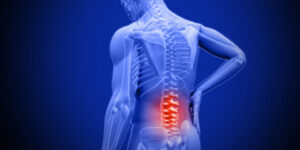
There are many resources available to help you stay safe at work. The following resouce is especially useful for you as a Health Care Assistant; read Back Talk: An Owner’s Manual for Backs | WorkSafeBC (https://www.worksafebc.com/en/resources/health-safety/books-guides/back-talk-an-owners-manual-for-backs?lang=en), a resource from WorkSafeBC (2014) that provides information about the care and maintenance of your back:
To better understand the importance of posture, watch the following TED-Ed (2015) video, The benefits of good posture – Murat Dalkilinç, on YouTube.
Summary:
Good body mechanics can save you energy and prevent injury as you work as a HCA. But proper body mechanics should be applied to all areas of your life; just need to be aware. Back, wrist, and shoulder injuries are all too common among health care workers.; using correct body mechanics and keeping physically fit can help reduce such injuries.
Chapter 3 Attributions and References
Image Attributions
- Figure 3.2.1 Centre of Gravity (https://commons.wikimedia.org/wiki/File:Centre_of_Gravity.png) by Doyle and McCutcheon (2015), via Wikimedia Commons, is used under a CC BY 4.0 (https://creativecommons.org/licenses/by/4.0/deed.en) license.
- Figure 3.2.2 Equilibrium Principle image on Table 3.2 Principles of Body Mechanics (https://pressbooks.bccampus.ca/clinicalproceduresforsaferpatientcaretrubscn/chapter/3-2-body-mechanics/) from Doyle and McCutcheon (2015) is used under a CC BY 4.0 (https://creativecommons.org/licenses/by/4.0/deed.en) license.
- Figure 3.2.3 Home Care Transfer Pivot (https://commons.wikimedia.org/wiki/File:Home_Care_Transfer_Pivot.png) by BruceBlaus, via Wikimedia Commons, is used under a CC BY-SA 4.0 license.
- Figure 3.2.4 Torn Rotator Cuff (https://commons.wikimedia.org/wiki/File:Rotator_cuff_tear.jpg) by Nucleus Communications, via Wikimedia Commons, is used under a CC BY SA-4.0 (https://creativecommons.org/licenses/by/4.0/deed.en) licence.
- Figure 3.2.5 Poor body mechanics by Kim Morris, HCA Program/ Thompson Rivers University, is used under a CC BY 2.0 (https://creativecommons.org/licenses/by/2.0/) licence.
- Figure 3.3.1 Back pain (https://www.flickr.com/photos/152511098@N08/33348393655) by David Cross, via Flickr, is used under a CC-BY-NC-SA 2.0 (https://creativecommons.org/licenses/by-nc-sa/2.0/) license.
Video
- The benefits of good posture – Murat Dalkilinç, by TED-Ed (2015), on YouTube.
References
Berman, A., & Snyder, S. J. (2016). Skills in clinical nursing (8th ed.). Pearson.
Interior Health Authority (2011). Safe patient handling. Patient handling injury prevention program. http://www.interiorhealth.ca/information.aspx?id=12726&terms=injury+prevention
Perry, A. G., Potter, P. A., & Ostendorf, W. R. (2018). Clinical nursing skills and techniques (9th ed.). Elsevier-Mosby.
Registered Nursing. (n.d.). Ergonomic principles: NCLEX-RN. https://www.registerednursing.org/nclex/ergonomic-principles/
TED-Ed. (2015, July 30). The benefits of good posture – Murat Dalkilinç (Video). YouTube. https://www.youtube.com/watch?v=OyK0oE5rwFY
Thomas, D., McMahon, A., & Thomas, Y. L. (2012). Figure 4.1 [image]. In Moving and handling guidelines 2012 (p. 88). Accident Compensation Corporation/ACC New Zealand. http://www.acc.co.nz/assets/provider/acc6075-moving-and-handling-people-guidelines.pdf
Workers’ Compensation Board of British Columbia (2009). Understanding the risks of musculoskeletal injury (MSI); An educational guide for workers on sprains, strains and other MSI’s. (pp. 1–3). Workers’ Compensation Board of B.C. https://www.worksafebc.com/en/resources/health-safety/books-guides/understanding-the-risks-of-musculoskeletal-injury-msi-an-educational-guide-for-workers-on-sprains-strains-and-other-msis?lang=en
WorkSafeBC. (2008). Understanding the risks of musculoskeletal injury (MSI): An educational guide for workers on sprains, strains, and other MSIs. http://www.worksafebc.com/publications/Health_and_Safety/by_topic/assets/pdf/msi_workers.pdf.
WorkSafeBC. (2013). Preventing musculoskeletal injury (MSI). http://www.worksafebc.com/publications/health_and_safety/by_topic/assets/pdf/msi_employers.pdf.
WorkSafeBC. (2014, December). Back talk: An owner’s manual for backs [PDF]. https://www.worksafebc.com/en/resources/health-safety/books-guides/back-talk-an-owners-manual-for-backs?lang=en

